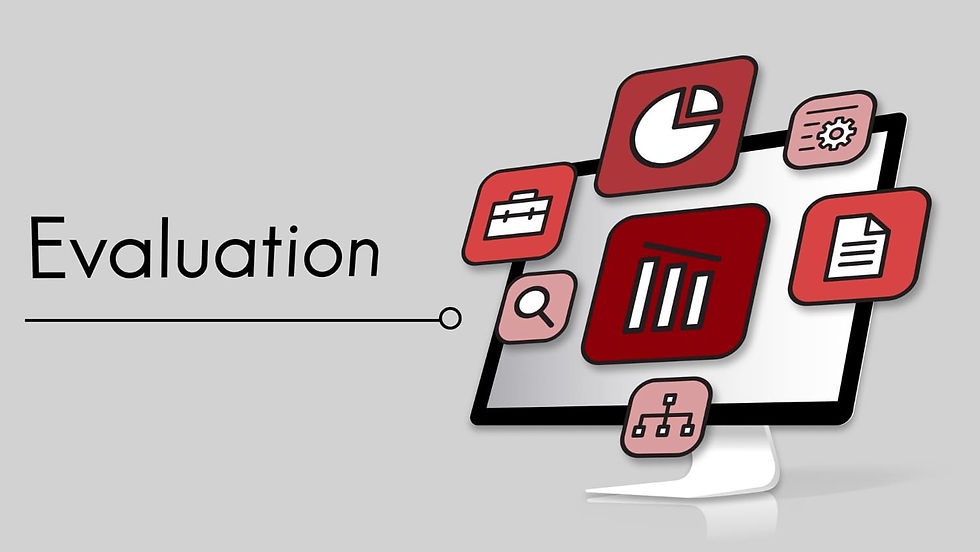- Alina A

- Mar 5, 2024
- 3 min read
In the digital age, the landscape of education and training has undergone a significant transformation with the advent of eLearning. Whether it's upskilling employees or educating clients, eLearning offers a flexible and efficient way to disseminate knowledge. However, successful eLearning implementation requires careful planning and meticulous execution. In this guide, we will delve into the blueprint for eLearning implementation, focusing specifically on analyzing project plans and timelines.
Understanding the Blueprint for eLearning Implementation

Implementing eLearning within a corporate organization involves several crucial steps, each of which contributes to the overall success of the initiative. The blueprint serves as a roadmap, guiding stakeholders through the process from conception to execution. Analyzing project plans and timelines is a pivotal aspect of this blueprint, ensuring that resources are allocated efficiently and goals are achieved within the specified timeframe.
Assessing Organizational Needs and Objectives

Before diving into the intricacies of project plans and timelines, it's essential to understand the organization's needs and objectives. What are the overarching goals of implementing eLearning? Is it to improve employee performance, reduce training costs, or enhance customer satisfaction? By clearly defining objectives, stakeholders can align their efforts towards a common purpose, laying the foundation for a successful eLearning initiative.
Conducting a Training Needs Analysis (TNA)

A comprehensive Training Needs Analysis (TNA) is instrumental in identifying the knowledge gaps and skill deficiencies within the organization. Through surveys, interviews, and performance evaluations, stakeholders can gather valuable insights into the specific training requirements of different departments or teams. This information forms the basis for designing targeted eLearning modules that address the identified needs, maximizing the impact of the training program.
Developing a Project Plan
With a thorough understanding of organizational needs and training requirements, the next step is to develop a detailed project plan. The project plan outlines the scope of the eLearning initiative, including deliverables, milestones, and resource allocation. It identifies key stakeholders, assigns roles and responsibilities, and establishes communication channels to facilitate collaboration throughout the implementation process.
Defining Clear Timelines and Milestones
Timelines play a critical role in eLearning implementation, providing a framework for tracking progress and ensuring timely completion of tasks. By setting realistic deadlines and milestones, stakeholders can monitor the project's trajectory and make necessary adjustments to stay on course. However, it's essential to strike a balance between ambition and feasibility, avoiding overly aggressive timelines that could lead to burnout or compromised quality.
Allocating Resources Effectively

Resource allocation is another key consideration when analyzing project plans and timelines. From personnel and technology to budgetary constraints, various resources are required to execute an eLearning initiative successfully. By carefully assessing resource needs and availability, stakeholders can optimize allocation to maximize efficiency and minimize bottlenecks. This may involve outsourcing certain tasks, investing in technology infrastructure, or providing training for personnel.
Implementing a Feedback Mechanism

Throughout the eLearning implementation process, soliciting feedback from stakeholders is crucial for evaluating progress and identifying areas for improvement. By implementing a feedback mechanism, such as surveys, focus groups, or performance metrics, organizations can gather valuable insights into the effectiveness of the training program. This iterative approach allows for continuous refinement and enhancement, ensuring that the eLearning initiative remains aligned with organizational objectives.
Monitoring and Evaluation

Once the eLearning initiative is underway, monitoring and evaluation are essential to measure its impact and effectiveness. Key performance indicators (KPIs) should be established to gauge learner engagement, knowledge retention, and overall training outcomes. By regularly reviewing these metrics, stakeholders can identify strengths and weaknesses in the eLearning program and make data-driven decisions to optimize performance.
Conclusion
Crafting an effective blueprint for eLearning implementation requires careful consideration of project plans and timelines. By assessing organizational needs, conducting a Training Needs Analysis, and developing a comprehensive eLearning project plan, stakeholders can lay the groundwork for a successful eLearning initiative. Clear timelines, effective resource allocation, and ongoing monitoring and evaluation are essential elements in ensuring the program's success. By following these guidelines and leveraging the power of eLearning, organizations can empower their workforce, enhance productivity, and achieve their business objectives in the digital age.








